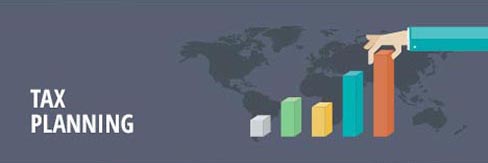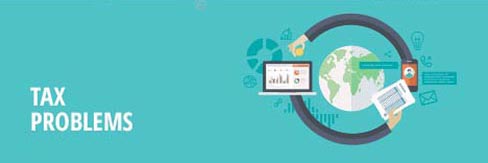The approach of a company’s year end is an important time to look at tax saving. Action has to be taken by that date, otherwise the opportunities could be lost.
Income - the general tax planning strategy should normally be to defer income and make full use of all available allowances and deductions.
Examples of how income can be deferred are:
- ensuring that goods or services are sold in a later accounting period and
- selling goods on consignment or on sale or return, so that the income need not be recognised until the goods are actually sold.
Expenditure - there are several ways in which a company can maximise deductions for expenses in an accounting period. Planned expenditure, for example on repairs, could be brought forward or, in some instances, a provision could be made in the accounts for future costs where these costs can be clearly quantified.
The following items merit particular review:
- Bad debts
- Stocks
- Closure and redundancy costs
- Bonuses
- Pension contributions
Capital expenditure which is proposed should be reviewed and, if necessary, expenditure brought forward that qualifies for capital allowances, so that it is incurred in the current accounting period.
100% allowances - Currently companies can get 100% tax relief in the year of purchase on the first £200,000 a year of expenditure on most types of equipment by claiming the Annual investment allowance (AIA).
| Periods from | Annual limit |
|---|---|
| 1 Jan 2016 - 31 Dec 2018 | £200,000 |
| 1 Jan 2019 | £1,000,000 |
Any balance of expenditure above this threshold attracts writing down allowances of 18% a year.
Trading losses - where the company is likely to incur tax losses in the current accounting period, the planning measures outlined can be used to increase the amount of the tax losses available for relief.
- In general, trading losses can be carried back to the immediately preceding year.
- The amount of losses that can be carried back to the immediately preceding year is unlimited.
- Trading losses which cannot be relieved by surrender or carry-back have to be carried forward to be set against future profits.
Capital gains - A company’s capital gains are chargeable to corporation tax.
Rollover relief - it may be possible to defer a gain with reinvestment in new qualifying assets.
Capital losses - A company that has realised capital gains might be able to sell investments to realise a capital loss to offset against the gains.
Timing of asset sales - it might be worth delaying the sale until the start of the next accounting period to delay the payment of tax on the gain.
Capital losses not set against gains in the current year can only be offset against future gains.
Shareholder-controlled and family companies
Some additional tax planning is possible in a company with a small number of shareholders.
- A family company should review whether it is preferable to pay dividends or salary. Paying dividends is normally more attractive than paying salaries.
- Shareholders should consider whether surplus funds should be paid out to shareholders and directors or retained in the company. This is relevant where the shareholders expect to sell the company or enter into a members’ voluntary liquidation. Entrepreneurs’ relief may make a disposal of shares more attractive than receiving dividends or bonuses.
Claims and Elections - Carry out a review of the time limits for tax claims and elections. If the time limits are missed, the company might have to pay additional tax unnecessarily. The time limits vary but the most important are those that must be made within two years of the end of a company’s accounting period. They include:
- Set-off of losses against the current or preceding accounting periods.
- Claim for enhanced tax relief for R&D expenditure.
- De-pooling of short-life assets for capital allowances.
- Capital allowances claims (made in a tax return)
Review the company's VAT position.
- Should the company be registered for VAT?
- Review the calculation basis where a company makes both taxable and exempt supplies.
- Ensure that VAT has been accounted for correctly.
- Review debtors and claim VAT relief as appropriate.
- A company with sales of <£1.35m or less could consider cash accounting.
- To reduce administration a company can opt to submit VAT returns once a year. (sales < £1.35m)
- The flat rate scheme may be available. (sales < £150k)
Company cars
The tax effects of benefit packages for employees must be reviewed regularly. The following points are among those that should be considered:
- The company car is no longer as tax-efficient as it once was for many employees, especially those with larger cars. It can be tax-efficient for employees with small, low emission cars and high private mileage. Employees could be offered a cash alternative and claim tax-free reimbursement for business mileage in their own cars.
- Free fuel for company cars - this is now a highly taxed benefit. It may be beneficial to switch to paying tax-free mileage allowances for business mileage.
Key Points - Saving tax is important but also consider:
- It is not enough for an investment to be tax-efficient: it should be a good investment in itself.
- Flexibility is desirable. Circumstances could change, and it might become necessary to unravel arrangements.
- The costs and general inconvenience that could be involved in implementing some strategies might outweigh the potential tax savings.
- As far as possible, company tax planning should be kept reasonably simple and straightforward.
Income
Expenditure
Capital Expenditure
Trading Losses
Capital gains
Family companies
Claims and Elections
Value Added Tax
Employee Costs
Tax Planning - Key Points
Company Pages ► Limited Companies ■ Tax Saving for Limited Company Owners ■ Tax Rates ■
Registered office: 61 Friar Gate, Derby, Derbyshire, DE1 1DJ T: 01332 202660
Adrian Mooy & Co is the trading name of Adrian Mooy & Co Ltd. Registered in England No. 05770414
v
Services
.png?crc=484381513)

01332 202660
61 Friar Gate Derby DE1 1DJ

Sign
up
Newsletter



